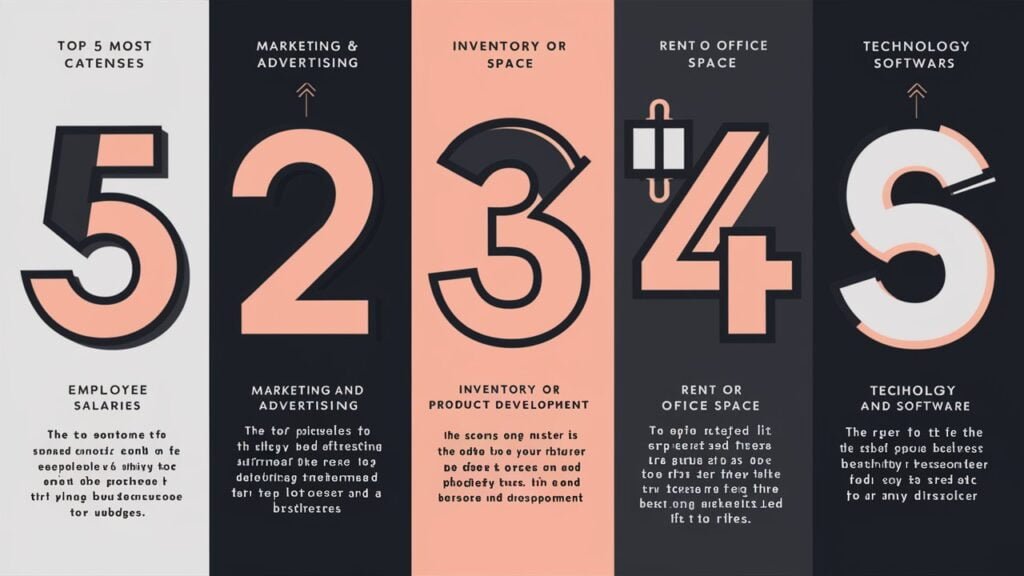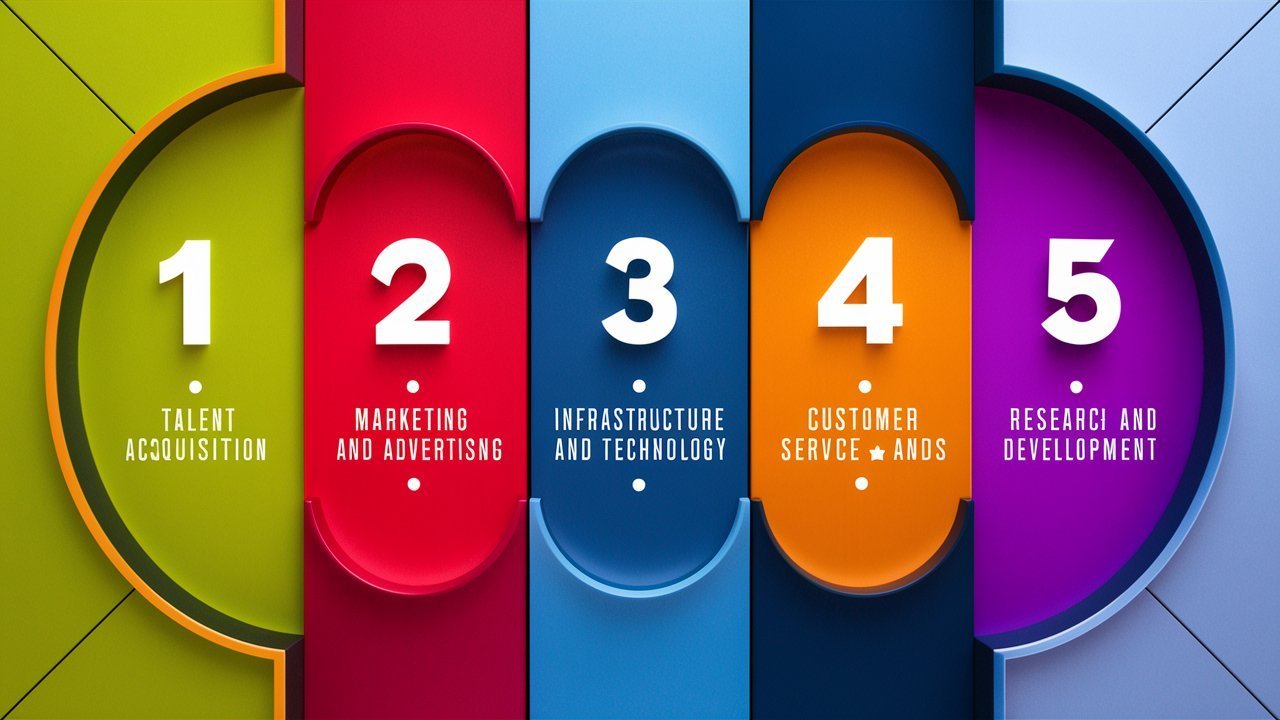Managing a business involves juggling various responsibilities, one of the most critical being budget management. Allocating resources efficiently ensures a company can operate smoothly, invest in growth opportunities, and withstand financial challenges. In this article, we will discuss The Top 5 Expenses Every Business Should Prioritize in Their Budget. Understanding these key areas will help business owners and financial managers make informed decisions to maintain fiscal health and drive success.
1. Employee Salaries and Benefits
One of the most significant expenses for any business is employee salaries and benefits. Attracting and retaining top talent requires offering competitive compensation packages. This expense includes:
Salaries and Wages
Salaries and wages form the bulk of this category. Ensuring that employees are fairly compensated for their work not only boosts morale but also increases productivity and loyalty.
Health Insurance
Offering health insurance is essential in today’s job market. Providing comprehensive health benefits can help attract top talent and reduce turnover.
Retirement Plans
Contributing to retirement plans like 401(k)s can be a significant expense but is crucial for long-term employee satisfaction and retention.
Bonuses and Incentives
Bonuses and incentives motivate employees to perform at their best. Performance-based rewards can drive better results and foster a culture of excellence.
Training and Development
Investing in training and development ensures that employees have the necessary skills to excel in their roles. This can lead to higher efficiency and innovation within the company.
2. Marketing and Advertising
Effective marketing and advertising are crucial for business growth. Allocating a portion of the budget to these activities helps in building brand awareness, attracting new customers, and retaining existing ones.
Digital Marketing
Digital marketing encompasses social media campaigns, search engine optimization (SEO), and pay-per-click (PPC) advertising. Investing in digital channels can yield high returns due to their wide reach and targeted nature.
Traditional Advertising
Despite the rise of digital marketing, traditional advertising methods like print media, television, and radio still hold value. These methods can effectively reach specific demographics that may not be as active online.
Content Creation
Creating valuable content such as blog posts, videos, and infographics helps in engaging the audience and establishing the business as an authority in its industry.
Market Research
Conducting market research allows businesses to understand their target audience better, identify trends, and tailor their marketing strategies accordingly.
Branding
Investing in branding ensures a cohesive and professional image across all marketing materials, which helps in building trust and recognition.

3. Technology and Equipment
In today’s digital age, investing in technology and equipment is non-negotiable. Staying up-to-date with the latest technological advancements can improve efficiency, security, and overall performance.
Hardware and Software
Purchasing and maintaining hardware and software is a continuous expense. This includes computers, servers, specialized software applications, and cloud services.
IT Support
Having reliable IT support is crucial for preventing and addressing technical issues that could disrupt operations.
Cybersecurity
Investing in cybersecurity measures protects sensitive business and customer data from breaches and cyberattacks.
Equipment Maintenance
Regular maintenance of equipment ensures that all tools and machines are functioning optimally, reducing the risk of costly breakdowns.
Innovation
Allocating funds for innovation allows businesses to adopt new technologies that can provide a competitive edge and streamline processes.
4. Operational Costs
Operational costs are the expenses required for the day-to-day functioning of a business. These costs vary depending on the industry but typically include:
Rent and Utilities
Paying for rent and utilities is often one of the largest operational expenses. This includes the cost of office space, electricity, water, and internet services.
Office Supplies
Regularly purchasing office supplies such as stationery, furniture, and other essentials is necessary to maintain productivity.
Inventory and Materials
For businesses that sell physical products, maintaining an adequate inventory of goods and materials is crucial to meet customer demand.
Shipping and Logistics
Costs associated with shipping and logistics can add up, especially for e-commerce businesses. Efficient logistics management can help reduce these expenses.
Insurance
Business insurance policies, including liability, property, and workers’ compensation insurance, are essential for protecting the company against unforeseen events.
5. Debt Repayment
Managing debt repayment is critical for maintaining a healthy financial position. Accumulating debt without a clear repayment plan can lead to financial instability.
Loan Payments
Businesses often take out loans to finance expansion, purchase equipment, or manage cash flow. Regular repayment of these loans is essential to avoid high-interest charges and maintain good credit.
Interest Expenses
Paying interest on loans and other credit facilities is an unavoidable expense. Reducing interest costs by negotiating better terms or consolidating debt can improve financial health.
Credit Card Bills
Credit card bills should be paid off promptly to avoid high-interest charges and maintain a positive credit rating.
Managing Cash Flow
Effective cash flow management ensures that there are sufficient funds available to meet debt obligations and other financial commitments.
Financial Planning
Implementing strategic financial planning helps businesses to manage debt effectively, plan for future expenses, and invest in growth opportunities.

